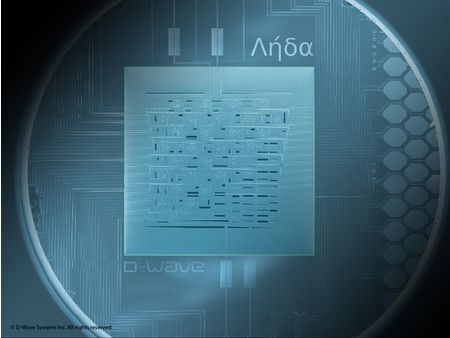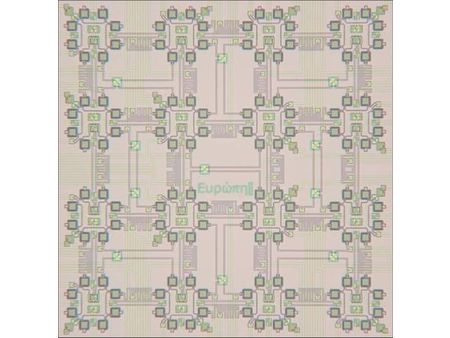Super-Cooled Quantum Computing Is Coming
Cold Enough To Super Conduct
The exotic material in D-Wave’s quantum chip is niobium; cool it enough and it becomes a superconductor. When ordinary metal conducts electricity, the electrons carrying the electric current collide with the imperfections in the metal and you get resistance. When you cool superconducting metal like niobium, the metal’s electrons form Cooper pairs where the motion of one electron is matched by an equal and opposite motion of the paired electron, which stops the electrons hitting the imperfections and generating resistance, which means the electrons flow freely without you needing to pump in extra current. When the Cooper pairs enter the Josephson junctions in the chip – made up of two segments of superconducting niobium linked by a weak insulating barrier – they break up, creating electron-like quasi-particles that can tunnel through the insulator in the junction, effectively conducting the current through the junction.
The niobium is arranged in rings through which the current can flow clockwise, anti-clockwise or in a mixture of both directions – corresponding, according to Rose, to the 0, 1 or superposition of the two values in the quantum bit of information (qubit) that quantum computing is based on. “The chip is a series of metal traces on a silicon substrate; the substrate is the same as you’d use for any semiconductor process but on top are layers of metal interrupted by insulators. This is an entirely metal based magnetic thing where all the information is stored in the direction of the current flows around the metal loop and interruptions.”
The direction of the current converts into a value for the qubit based on whether that qubit has a bias towards one direction (0 or 1), whether neighbouring qubits are running the in same or opposite directions and the energy barrier between the different qubit states. The current chip, Leda, has 28 rings, giving 28 qubits, but they’re not all interconnected to each other, only to a number of ‘neighbours’. The Cooper pair in the niobium are technically bosons so they all exist in the same quantum state, Rose claims, which gives the entire superconductor quantum properties even without interconnecting every qubit. Reducing the number of interconnections simplifies manufacturing and has enabled D-wave to go from 2 qubits in 2002 to 16 in 2007, 28 today – and 512 and 1024 over the next year, if things go well.
Get Tom's Hardware's best news and in-depth reviews, straight to your inbox.
Current page: Cold Enough To Super Conduct
Prev Page D-Wave’s Orion: The First Commercial Quantum Computer? Next Page It’s All Pattern Catching-
LIKE A GLOVE!Reply
I WANT TO SEE THAT THING PWN SOME GAMES >< I KNOW A LITTEL OVER BOARD BUT I CANT DREAM CANT I? -
robertking82881 dam you beat me to 1st post ?> o wait that was me i just was to fast about posting i did not sigh in o well i cant prove it now but i know it was me >< LIKE A GLOVEReply -
robertking82881 oops i said a bad word dont report me >< any ways the 1st post was me i was to quick to sigh in and yes i have made 3 post so sue me. LIKE A GLOVEReply -
magicandy I still wish someone would explain exactly how quantum mechanics and quantum computers work. Do they actually defy the laws of physics or what? I didn't think that was possible.....Reply -
lucuis Very cool, i'd also like to see that pwn some games. However judging by what they say, it'll be very difficult to do if it's even possible.Reply
BTW what does it matter who got first post anyway? lol -
Quantum computers process information with the "electron pairing" effect they naturally operate with, meaning it operates in such a way when one of the 28 bits is "doing something", it affects other parts of the chip in such a way they "do the same thing" naturally...it has very deep implications because it would basically SCALE LIKE CRAZY....NATURALLY....we are still in its infancy w/ 28 QBits, i dont even immagine what is will be like with 512...1024....a Giga QBit.....a Tera Q Bit.... they would all scale naturally... whatever we an do now whit it will be done faster and better when wider versions of the chip come out, withought the need to re-coding i immagine (Totally different from the way we program now with the current multi-core chips needing special programming to take advantage of more resources).- my 2 centz.Reply
-
Quantum computers process information with the "electron pairing" effect they naturally operate with, meaning it operates in such a way when one of the 28 bits is "doing something", it affects other parts of the chip in such a way they "do the same thing" naturally...it has very deep implications because it would basically SCALE LIKE CRAZY....NATURALLY....we are still in its infancy w/ 28 QBits, i dont even immagine what is will be like with 512...1024....a Giga QBit.....a Tera Q Bit.... they would all scale naturally... whatever we an do now whit it will be done faster and better when wider versions of the chip come out, withought the need to re-coding i immagine (Totally different from the way we program now with the current multi-core chips needing special programming to take advantage of more resources).- my 2 centz.Reply
-
the last resort basically, a quantum computer does not have to do "work" to get an answer. The "work" it does involves electrons and atoms. The problem is, is that when the "computer" reads the atoms/electrons, they are destroyed. So, the data can only be read once. But as mentioned in the article, code cracking would be very easy, as the computer would only have to work with one atom. Basically, the future quantum computer will be able to crack any code, instantly.Reply

